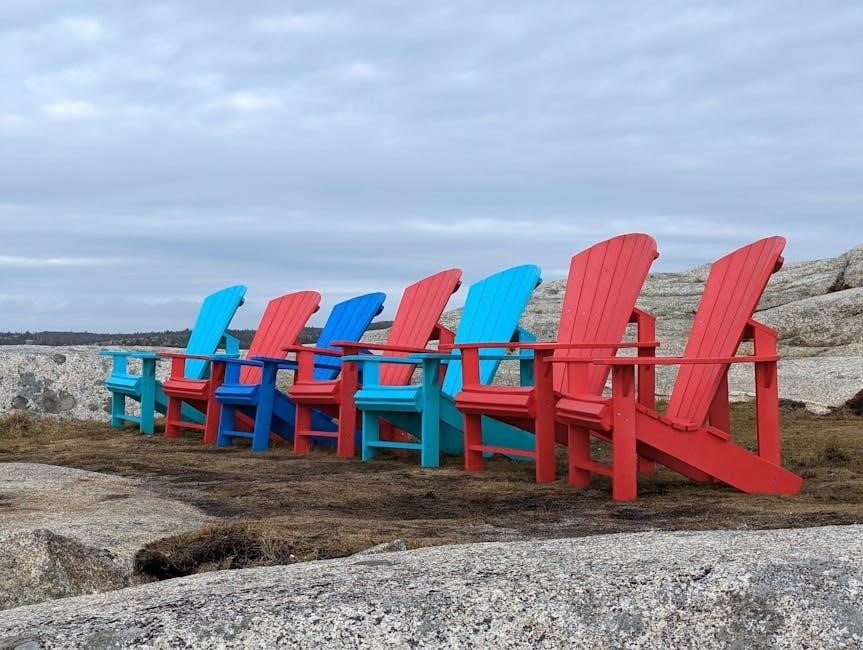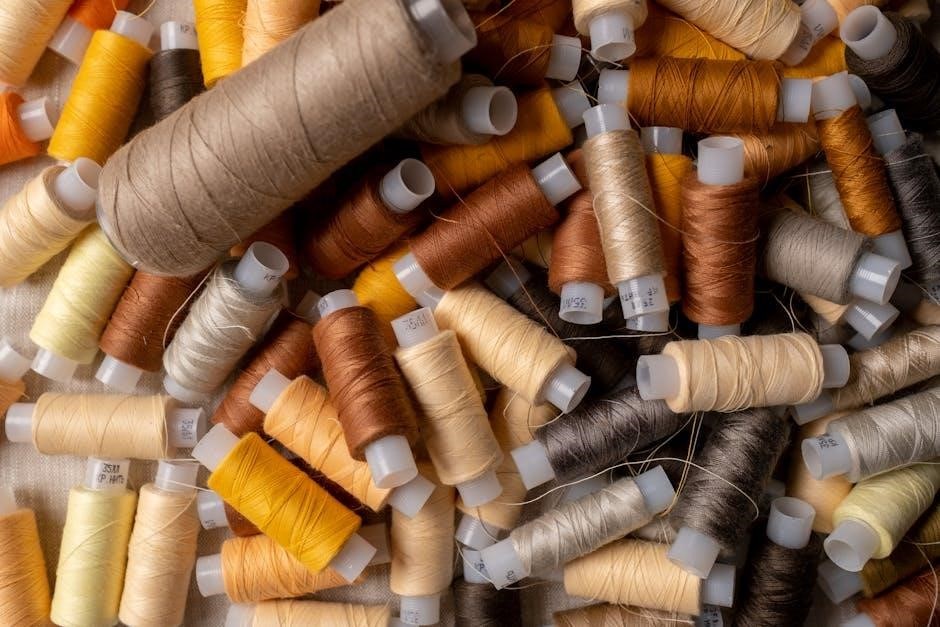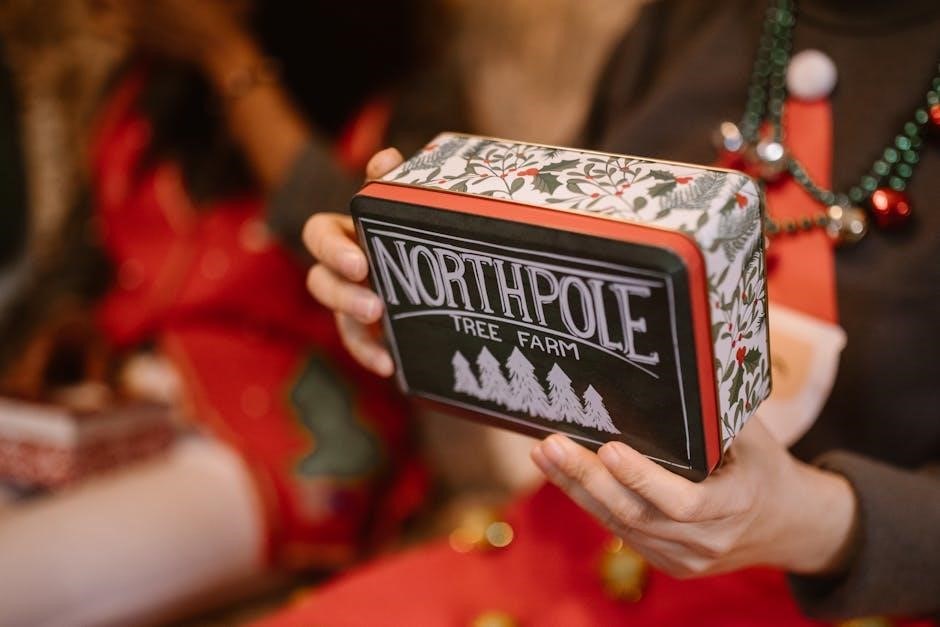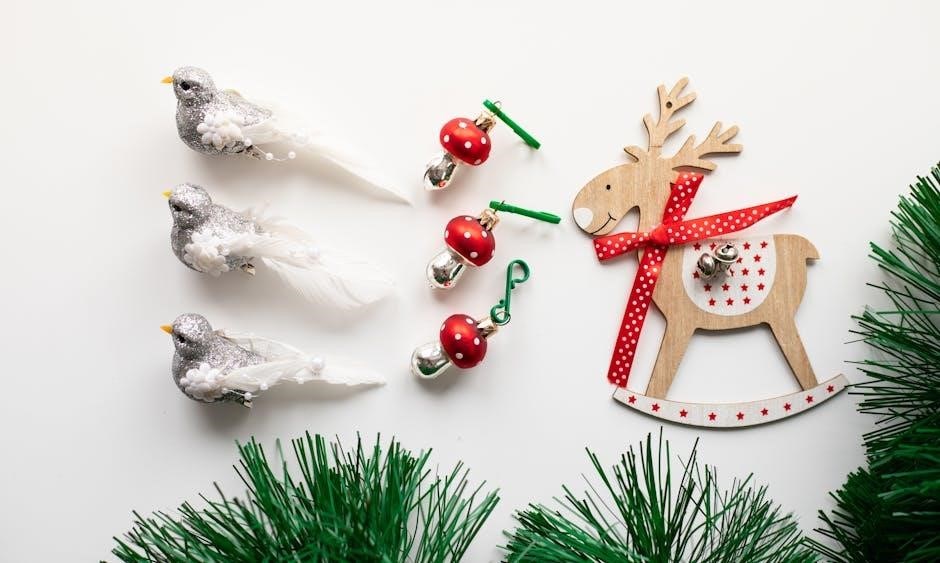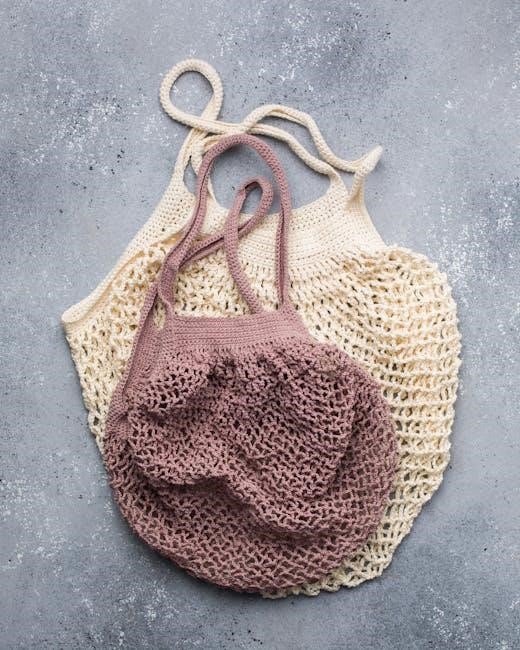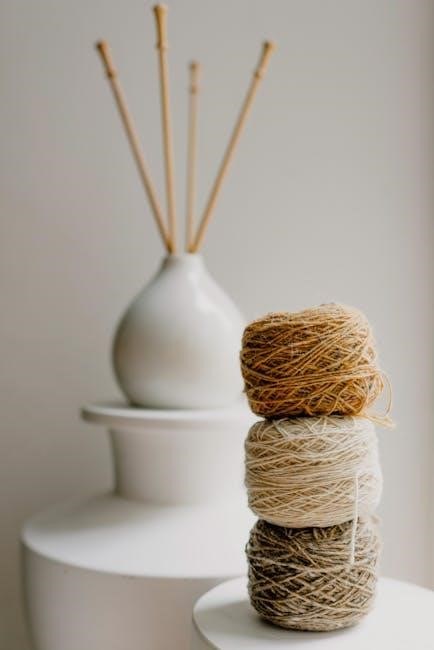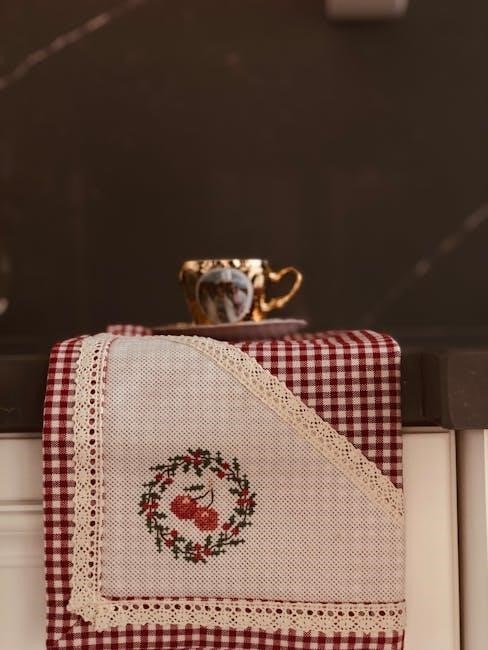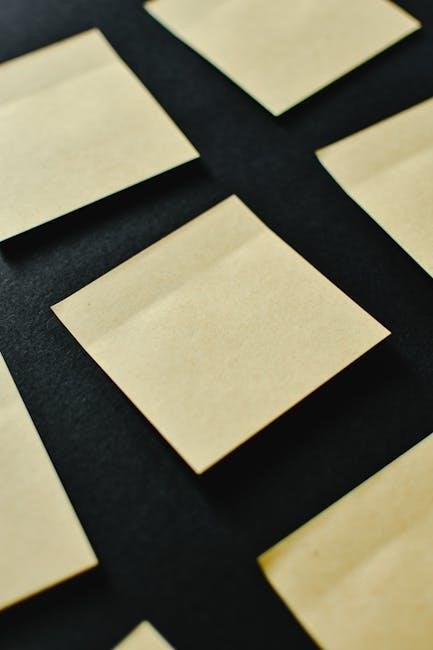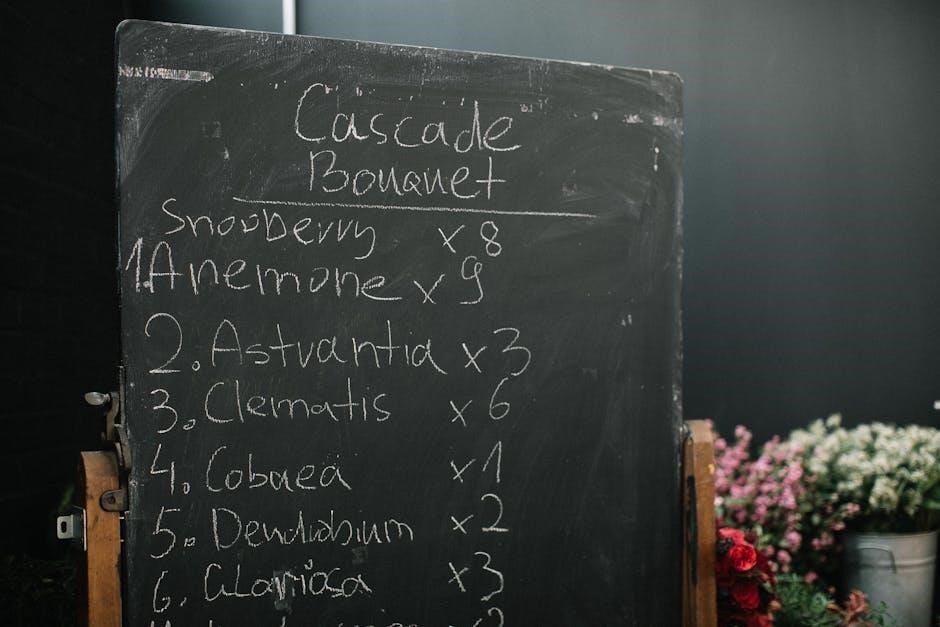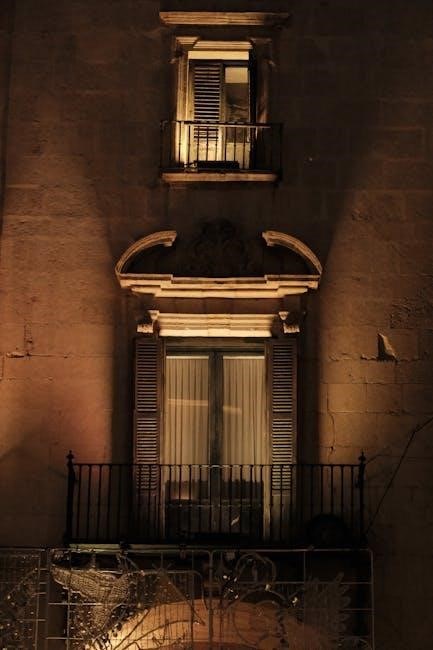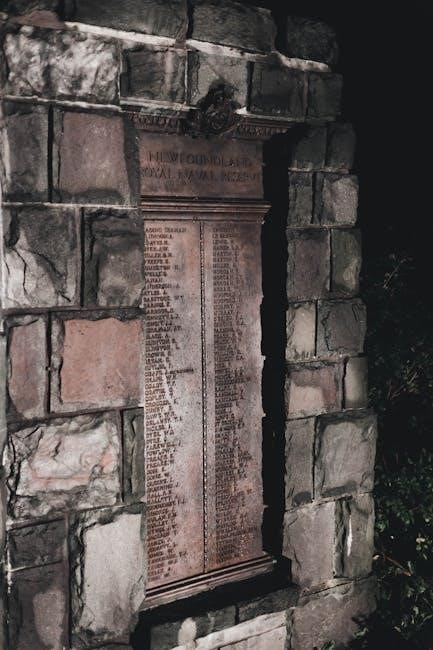The 5×5 workout is a classic, no-nonsense training approach, favored by lifters for generations. It’s renowned for building strength and muscle effectively, offering a simple yet powerful path to fitness gains.
Historical Context of 5×5
The 5×5 method gained prominence in the 1960s, becoming a staple in strength training circles. While its exact origins are debated, it’s often linked to weightlifting coaches seeking a straightforward, effective program. This approach resonated with golden-era bodybuilders and strength athletes, emphasizing consistent progression with manageable volume.
Its simplicity and results fueled its enduring popularity, offering a stark contrast to more complex routines. The 5×5 method’s reliability has ensured its continued use, even as fitness trends evolved, proving its timeless effectiveness for building strength.
Core Principles of the 5×5 Program
The 5×5 program centers around performing five sets of five repetitions for each exercise. This rep scheme balances strength and hypertrophy, promoting both gains. Linear progression is key – consistently adding weight each workout when possible.
Focusing on compound lifts like squats, bench press, and deadlifts maximizes muscle engagement and overall strength development. Consistency and proper form are paramount, ensuring safe and effective training. The program’s simplicity encourages adherence, making it ideal for beginners and experienced lifters alike.
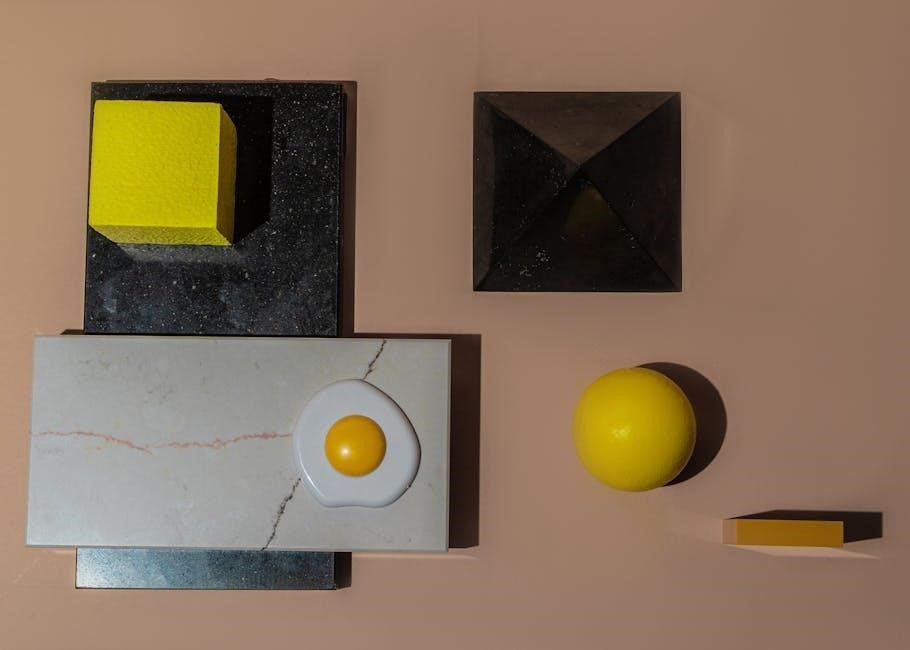
Understanding the 5×5 Workout Structure
The 5×5 structure revolves around completing five sets of five repetitions for a select few core exercises, typically performed three times per week.
The Basic 5×5 Routine
A foundational 5×5 routine typically centers on five key compound exercises: squats, bench press, overhead press, deadlifts, and barbell rows. Each exercise is performed for five sets of five repetitions. This simplicity is intentional, focusing on progressive overload. Beginners often start with lighter weights, prioritizing proper form over maximal load. The routine is generally completed three times weekly, with rest days strategically placed for recovery. Consistency is paramount; sticking to the schedule and gradually increasing weight each session drives results.
Frequency and Rest Days
Optimal 5×5 training typically involves three workouts per week, allowing for adequate recovery between sessions. A common split is Monday, Wednesday, and Friday, but adjustments can be made to fit individual schedules. Rest days are crucial for muscle repair and growth; avoid training the same muscle groups on consecutive days. Listen to your body and take extra rest when needed. Prioritizing sleep and proper nutrition further enhances recovery, maximizing the benefits of each workout and preventing overtraining.
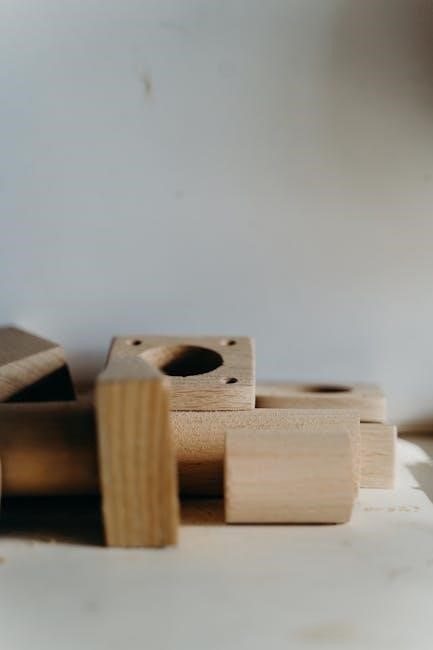
Key Exercises in a 5×5 Program
The core of a 5×5 program centers around compound lifts: squats, bench press, overhead press, deadlifts, and barbell rows, building overall strength efficiently.
Squats: Technique and Importance
Squats are foundational to the 5×5 method, building lower body strength and overall power. Proper technique is paramount: maintain a straight back, chest up, and descend until thighs are parallel to the ground. Focus on controlled movements, driving through your heels.
Squats engage numerous muscle groups – quads, hamstrings, glutes, and core – promoting balanced development. They are crucial for improving athletic performance and functional strength. Mastering squat form prevents injury and maximizes gains, making it a cornerstone exercise.
Bench Press: Form and Progression
The bench press is a key upper body exercise in 5×5, targeting chest, shoulders, and triceps. Maintain a slight arch in your back, feet flat on the floor, and grip the bar slightly wider than shoulder-width. Lower the bar to your chest with control, then press it back up powerfully.
Progression is vital: gradually increase the weight each workout, even if it’s just a small increment. This linear progression drives strength gains. Prioritize form over weight to avoid injury and ensure effective muscle engagement.
Overhead Press: Proper Execution
The overhead press builds shoulder and upper body strength, demanding strict form. Stand with feet shoulder-width apart, core engaged, and back straight. Grip the barbell slightly wider than shoulder-width, and press it overhead in a controlled manner, locking out your elbows at the top.
Lower the bar back to your starting position with control. Avoid arching your back excessively. Consistent, proper execution is crucial for maximizing gains and preventing injuries during this compound lift.
Deadlifts: Safety and Form
Deadlifts are a powerful full-body exercise, but require impeccable form to avoid injury. Start with feet hip-width apart, the barbell over midfoot. Maintain a straight back, chest up, and engage your core. Hinge at the hips, keeping your back straight, and grip the bar slightly wider than shoulder-width.
Lift by extending your hips and knees simultaneously, keeping the bar close to your body. Lower the weight with control, reversing the motion. Prioritize form over weight.
Barbell Rows: Engaging the Back Muscles
Barbell rows are crucial for developing a strong and thick back. Stand with feet shoulder-width apart, knees slightly bent, and hinge at the hips, maintaining a flat back. Grip the barbell with an overhand grip, slightly wider than shoulder-width. Pull the barbell towards your lower chest, squeezing your shoulder blades together.
Lower the weight with control, maintaining a stable core and back position. Focus on engaging your lats and rhomboids throughout the movement.
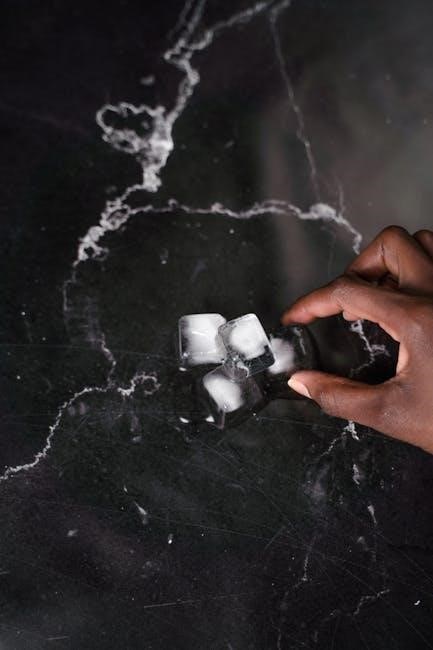
Progression and Overload in 5×5
Consistent progression is key to 5×5 success. Gradually increasing weight each workout drives adaptation and strength gains, ensuring continuous improvement over time.
Linear Progression Explained
Linear progression forms the bedrock of many 5×5 programs, particularly for beginners. It involves adding a small, consistent increment of weight to each exercise every workout session. This straightforward approach maximizes strength gains initially, as the body adapts readily to the increasing demands. Typically, increments of 2.5-5lbs are used for upper body lifts, and 5-10lbs for lower body exercises.
This method relies on the principle of progressive overload, continually challenging muscles to stimulate growth and strength. However, linear progression isn’t indefinite; eventually, the body will require more sophisticated strategies.
Adding Weight: When and How Much
Weight should be added to each exercise when you successfully complete all sets and reps with good form. For upper body lifts like bench press and overhead press, a 2.5-5lb increase is standard. Lower body exercises, such as squats and deadlifts, can typically handle 5-10lb increments.
Listen to your body; don’t prioritize adding weight over maintaining proper technique. Small, consistent increases are more sustainable than large jumps that compromise form and increase injury risk. Prioritize quality over quantity.
Dealing with Plateaus
Plateaus are inevitable in any strength training program, including 5×5. When progress stalls, avoid immediately increasing weight. First, assess your form – even slight deviations can hinder progress. Consider a deload week, reducing volume and intensity to allow for recovery.
Ensure adequate nutrition and sleep, as these are crucial for muscle recovery and growth. If plateaus persist, explore variations of the core exercises or incorporate accessory work to target supporting muscle groups.

Nutrition for 5×5 Training
Fueling your body is vital for 5×5 success. Prioritize protein for muscle recovery, a caloric surplus for growth, and carbohydrates for sustained energy during intense workouts.
Protein Intake for Muscle Recovery
Adequate protein intake is absolutely crucial when following a 5×5 program, as it provides the building blocks necessary for repairing and rebuilding muscle tissue damaged during intense lifting sessions. Aim for approximately 0.8 to 1 gram of protein per pound of body weight daily to optimize recovery and support muscle hypertrophy.
Prioritize lean protein sources like chicken, fish, beef, eggs, and dairy. Supplementing with whey protein can be beneficial, especially post-workout, to quickly deliver amino acids to muscles. Consistent protein consumption throughout the day is more effective than consuming a large amount in one sitting.
Caloric Surplus for Muscle Growth
To maximize muscle growth alongside the strength gains from a 5×5 program, a consistent caloric surplus is essential. This means consuming more calories than your body expends daily, providing the energy needed for muscle protein synthesis and overall recovery. A surplus of 250-500 calories per day is a good starting point;
Focus on nutrient-dense foods, not just empty calories. Track your intake to ensure you’re consistently in a surplus, and adjust as needed based on your progress. Combining a caloric surplus with adequate protein intake is the key to building substantial muscle mass.
Importance of Carbohydrates
Carbohydrates are crucial for fueling intense 5×5 workouts and replenishing glycogen stores depleted during heavy lifting. They provide the primary energy source for muscle contractions, enabling you to push through challenging sets and maintain performance throughout your training sessions. Prioritize complex carbohydrates like whole grains, sweet potatoes, and fruits.
Adequate carbohydrate intake also supports muscle recovery and protein synthesis. Don’t shy away from carbs; they are a vital component of a successful 5×5 program and overall muscle growth.
Variations of the 5×5 Workout
Several 5×5 program variations exist, including StrongLifts 5×5, Starting Strength, and Wendler’s 5/3/1, each offering unique progression schemes and accessory work options.
StrongLifts 5×5 Program Details
StrongLifts 5×5 is a beginner-friendly program emphasizing progressive overload with five core exercises: squats, bench press, overhead press, deadlifts, and barbell rows. Perform three workouts per week, with rest days in between. The program focuses on adding weight to each exercise each workout, as long as proper form is maintained. It’s designed for simplicity and rapid strength gains, making it ideal for those new to strength training or returning after a break. Focus on consistent progression and proper technique for optimal results.
Starting Strength 5×5 Program Details
Starting Strength, like StrongLifts, is a linear progression program built around five foundational lifts: squats, bench press, overhead press, deadlifts, and power cleans. Three workouts weekly are prescribed, alternating between these exercises; The core principle is consistently increasing weight each session, prioritizing form above all else. It’s a robust program designed to build a strong base of strength quickly. Emphasis is placed on learning proper technique from the outset, ensuring long-term progress and injury prevention.
Wendler 5/3/1 as a 5×5 Progression
Jim Wendler’s 5/3/1 program offers a more periodized approach than simple linear progression. While not strictly 5×5 across the board, it utilizes 5×5 sets and reps as a key component within its four-week cycles. The program focuses on percentages of your one-rep max, gradually increasing weight over time. Accessory work is also integrated, addressing weaknesses and promoting balanced development. It’s a flexible system adaptable to various experience levels, offering long-term sustainability.
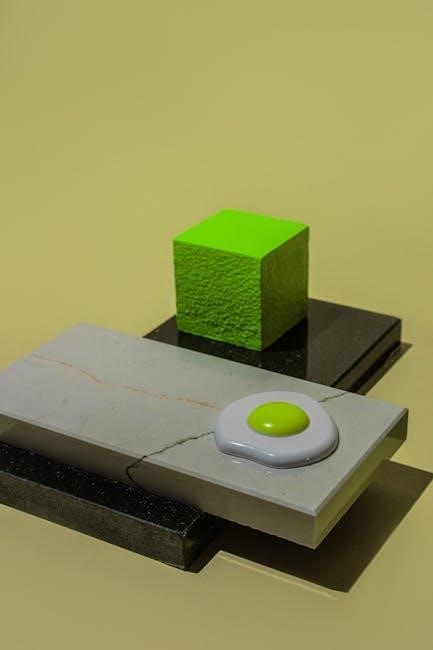
Benefits of the 5×5 Workout
The 5×5 method delivers substantial strength gains, promotes muscle hypertrophy, and significantly improves performance in core compound lifts, enhancing overall fitness levels.
Strength Gains and Muscle Hypertrophy
The 5×5 program excels at building raw strength due to its focus on heavy compound movements performed across five sets of five repetitions. This rep scheme effectively stimulates muscle fibers, leading to noticeable strength increases over time. Simultaneously, the consistent overload promotes muscle hypertrophy – the growth of muscle tissue – resulting in a more robust and powerful physique.
The methodical progression inherent in 5×5 ensures continuous challenge, forcing muscles to adapt and grow stronger with each workout session. This makes it ideal for both beginners and experienced lifters seeking substantial gains.
Improved Compound Lift Performance
A primary benefit of the 5×5 method is its dramatic improvement in compound lift performance – specifically, exercises like squats, bench press, overhead press, and deadlifts. By consistently practicing these foundational movements with increasing weight, you’ll witness significant gains in your one-rep max and overall lifting capacity.
The program’s structure directly targets the muscle groups utilized in these lifts, enhancing technique and building the necessary strength to handle heavier loads. This translates to better performance in other athletic endeavors as well.
Enhanced Overall Fitness
Beyond strength gains, the 5×5 workout contributes to enhanced overall fitness. The compound exercises engage multiple muscle groups simultaneously, leading to improved muscular endurance and cardiovascular health. Consistent training boosts metabolism, aiding in weight management and body composition.
Furthermore, the program fosters improved stability, balance, and coordination. This holistic approach to fitness extends beyond the gym, positively impacting daily activities and reducing the risk of injury.
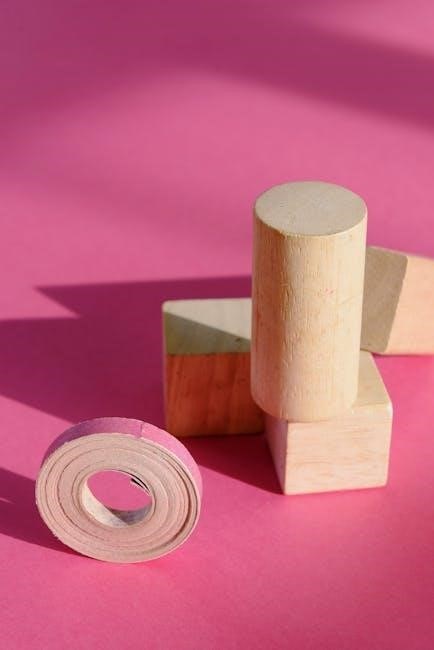
Common Mistakes to Avoid in 5×5
Avoid incorrect form, rapid progression, and insufficient recovery. These errors hinder progress and increase injury risk, undermining the 5×5 method’s effectiveness.
Incorrect Form and Technique
Maintaining proper form is paramount in the 5×5 program. Compromised technique drastically increases injury risk and diminishes the workout’s benefits. Prioritize controlled movements over lifting heavier weights. Focus on full range of motion, engaging the correct muscle groups throughout each exercise.
Seek guidance from a qualified trainer to ensure correct execution, especially for complex lifts like squats and deadlifts. Video recording yourself can also help identify and correct form flaws. Remember, consistency with good form yields far greater long-term results than haphazardly pushing weight.
Progressing Too Quickly
A common pitfall in 5×5 training is escalating weight too rapidly. While linear progression is central to the method, attempting to add weight each session without sufficient strength adaptation is counterproductive. This often leads to form breakdown, increasing the likelihood of injury and hindering long-term progress.
Listen to your body and prioritize mastering the current weight before increasing it. Small, incremental increases are far more sustainable and effective than large jumps. Patience and consistency are key to unlocking the full potential of the 5×5 program.
Insufficient Rest and Recovery
Adequate rest is paramount for success with the 5×5 method. Compound lifts demand significant recovery time; neglecting this leads to overtraining, stalled progress, and increased injury risk. Aim for at least one full rest day between 5×5 workouts, allowing muscles to repair and rebuild.
Prioritize sleep – 7-9 hours nightly – and consider active recovery techniques like light cardio or stretching. Ignoring recovery signals undermines the program’s effectiveness, hindering strength gains and overall well-being.

5×5 for Beginners: A Step-by-Step Guide
Start with manageable weights, focusing on perfect form. Warm-up thoroughly, track your progress diligently, and gradually increase weight each session for optimal results.
Initial Weight Selection
Choosing the right starting weight is crucial for beginners. Prioritize mastering proper form over lifting heavy immediately. Select a weight you can comfortably lift for all five sets of five repetitions, leaving one or two reps “in the tank.” This ensures you’re not compromising technique. Err on the side of lighter weight; it’s far better to build a solid foundation than risk injury. Don’t be afraid to start with just the barbell if necessary, focusing on controlled movements and establishing a mind-muscle connection. Consistent, correct form will yield far greater long-term gains.
Warm-up and Cool-down Routines
A proper warm-up prepares your muscles and joints for the demands of the 5×5 workout. Include five to ten minutes of light cardio, like jogging or jumping jacks, followed by dynamic stretching – arm circles, leg swings, and torso twists. Before each set, perform warm-up sets with lighter weights. Cool-downs are equally vital, aiding recovery and flexibility. Static stretches, holding each stretch for 30 seconds, should target the muscles worked during the session. Prioritize these routines to minimize injury risk and maximize performance.
Tracking Progress and Adjustments
Consistent tracking is crucial for 5×5 success. Record each workout – exercises, sets, reps, and weight used. Monitor your performance; if you successfully complete all sets and reps, increase the weight slightly in the next session. If you struggle, maintain the weight or even decrease it. Listen to your body and adjust accordingly. Plateaus are normal; consider deloading or varying exercises. Regular assessment ensures continuous progress and prevents stagnation, optimizing your strength gains over time.
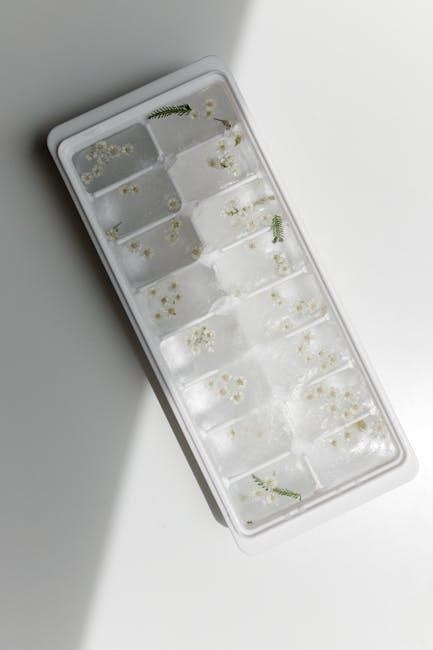
Advanced 5×5 Techniques
Deloading, accessory work, and periodization refine the 5×5 method. These strategies prevent plateaus, enhance recovery, and promote continued strength and muscle development.
Deloading Strategies
Deloading is a crucial, often overlooked, component of long-term 5×5 success. It involves intentionally reducing training volume or intensity – typically by 40-60% – for a week. This allows the central nervous system and muscles to fully recover, preventing overtraining and minimizing injury risk.
Several deloading methods exist. You can reduce weight across all lifts, decrease the number of sets performed, or simply take a complete week off from lifting.
Scheduled deloads, every 4-8 weeks, are proactive. Reactive deloads occur when performance plateaus or excessive fatigue sets in. Listen to your body; recovery is paramount.
Accessory Work Integration
While the core 5×5 focuses on compound lifts, strategic accessory work enhances overall development and addresses weaknesses. These exercises support the main lifts, improve muscle balance, and prevent plateaus. Focus on movements that complement squats, bench press, overhead press, and deadlifts.
Examples include rows for back strength, pull-ups for upper body pulling power, and core work for stability.
Keep accessory volume moderate – 2-3 sets of 8-12 reps – to avoid hindering recovery from the primary 5×5 lifts. Prioritize quality over quantity.
Periodization within 5×5
Long-term adherence to 5×5 benefits from periodization, preventing stagnation and optimizing progress. Linear progression is effective initially, but eventually requires modification. Consider incorporating deload weeks – reducing volume and intensity – to allow for recovery and supercompensation.
Wave loading, alternating between heavier and lighter weeks, can also be beneficial.
More advanced periodization schemes involve cycling through phases of strength, hypertrophy, and power, tailoring the program to specific goals and individual responses.
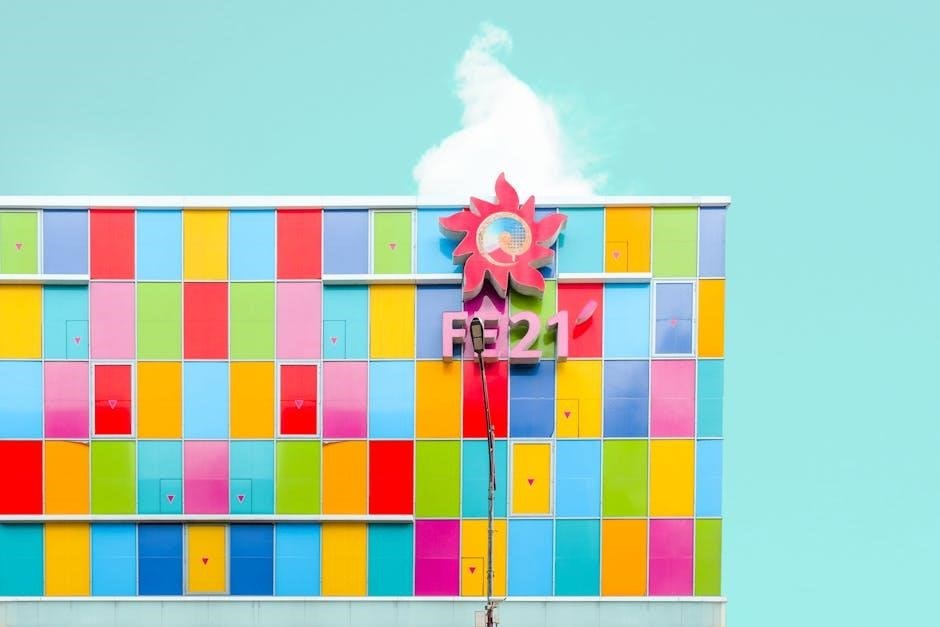
Resources for 5×5 Training
Numerous online calculators and trackers aid in 5×5 progression. Books and articles offer detailed guidance, while community forums provide support and shared experiences.
Online Calculators and Trackers
Several websites offer valuable tools for managing your 5×5 program. These calculators help determine starting weights based on your current strength levels, ensuring a safe and effective beginning. Trackers allow meticulous logging of each workout, monitoring progress and identifying plateaus.
Popular options include spreadsheets designed for linear progression, and dedicated apps that automatically calculate weight increases; Utilizing these resources streamlines the process, removing guesswork and maximizing your potential for consistent gains. Consistent tracking is key to long-term success with the 5×5 method.
Recommended Books and Articles
Delving deeper into strength training principles enhances your 5×5 experience. “Starting Strength” by Mark Rippetoe is a foundational text, detailing proper form and progression. “The New Encyclopedia of Modern Bodybuilding” provides comprehensive exercise guidance.
Numerous online articles dissect the 5×5 method, offering variations and troubleshooting advice. Websites like StrongLifts.com and Bodybuilding.com host valuable resources. Exploring these materials fosters a deeper understanding, allowing for personalized program adjustments and sustained progress. Knowledge empowers effective training!
Community Forums and Support Groups
Connecting with fellow 5×5 enthusiasts provides invaluable support and motivation. Online forums like Reddit’s r/5×5 and Bodybuilding.com’s forums offer platforms for sharing experiences, asking questions, and receiving feedback. These communities foster accountability and help overcome plateaus.
Facebook groups dedicated to StrongLifts 5×5 and Starting Strength provide additional support networks. Sharing progress, seeking advice, and learning from others’ journeys enhances your training experience and ensures long-term adherence to the program.










